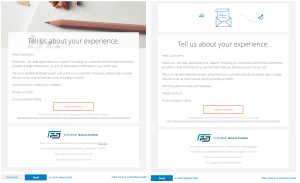
Goumbik / Pixabay
Every operational area needs to deal with paperwork. Filling it out, submitting it, making others fill out documents, submitting them, and of course, storage. Paperwork is especially prevalent in HR departments and teams.
Wherever you are in the world, employing staff comes with numerous legal obligations.
Paperwork, on an almost continuous basis, is how you demonstrate – to government agencies (e.g. those that collect taxes) – that your organization is adhering to these obligations. HR managers also need to request information from staff and contractors, such as the number of hours worked, or whether they need a holiday next month, which means there’s often a steady stream of documents and/or emails coming into and out of the HR department.
Everyday activities, such as payroll and holiday requests aren’t the only tasks HR undertakes. Health and safety are often the responsibility of this department.
Keeping employees safe
As an employer, it is your duty to provide a safe working environment for employees, whether they work in-house or in the field. This is done in the form of health and safety due diligence — taking all reasonable precautions to prevent injuries or accidents under particular circumstances in the workplace.
Due diligence as it applies to health and safety isn’t glamorous but it’s a legal requirement that works to the benefit of every individual within an organization. And not keeping on top of it can be costly. Fines for health and safety incidents cost businesses millions every year.
Keeping a health and safety diary and carrying out regular safety inspections is the best and easiest way to perform due diligence. It helps you to maintain compliance and detail specific checks and tasks with historical records to show for it. Completing a diary, however, can also be tedious and monotonous.
Between payroll and health and safety, there’s no room for shortcuts. All of this work represents a legal compliance burden that organizations can’t avoid. But that doesn’t mean it should involve a mountain of paperwork, all of which makes it more difficult to share with colleagues, keep secure, and store.
Digital technology can help solve all of these problems and streamline your HR processes. With automated, secure, and collaborative cloud-based forms, you can simplify the paperwork mountain and save money.
Benefits of secure online paperwork
Moving HR, health, and safety activities to a cloud-based system makes it quicker and easier to complete paperwork. Almost everyone has access to a company or personal smartphone or tablet, giving them the means to interact with HR easier than ever before.
By logging in to an online hub, team members can access the paperwork they need without any reliance on error-prone paper methods. For team members and HR, an online system for everything – including health and safety – comes with several benefits.
1. Auto fill-in
Online forms can be customized based on what the user is doing so that they show relevant questions. This massively speeds up the process and ensures critical information isn’t lost. Cloud-based forms can be customized around company processes and systems, which means that a lot of information can be built into it, saving the user even more time since they only need to answer questions requiring an answer not already known to HR.
2. Real-time information, faster response
Unlike the sluggishness of a post box system, mobile forms work in real-time. As soon as a report is filed, HR teams can get back to staff more quickly. Ideal if someone is reporting an emergency or suddenly needs a day off they weren’t expecting.
Reports can also be populated with photos and additional notes, making it easier to supply supporting information.
3. Trend analysis
Mobile forms leave a digital footprint which allows data to be searched and analyzed in a way that’s far superior to email or paper. By storing all reports in the cloud, management can aggregate data to create custom reports to identify incident trends by type, time, and location. This information can be used to improve workflows and operational processes.
For companies that rely on a remote workforce, mobile incident reporting provides an efficient and effective way to execute reports, helping to promote faster communication and build a safer working environment.
Business & Finance Articles on Business 2 Community
(89)






